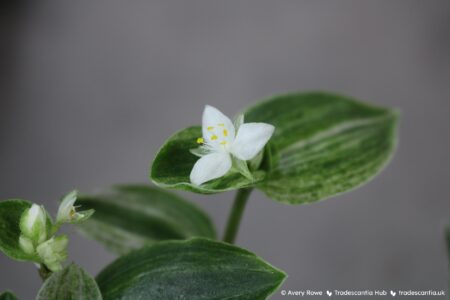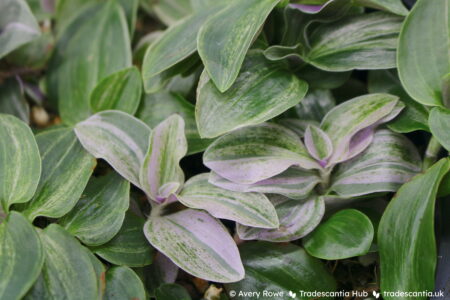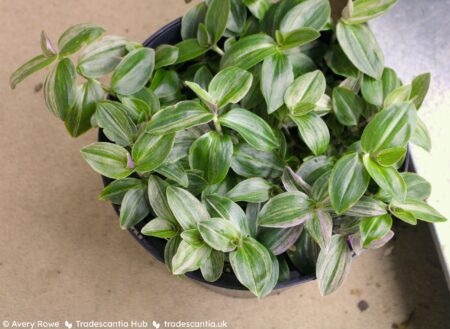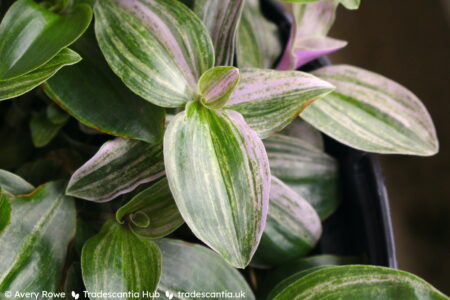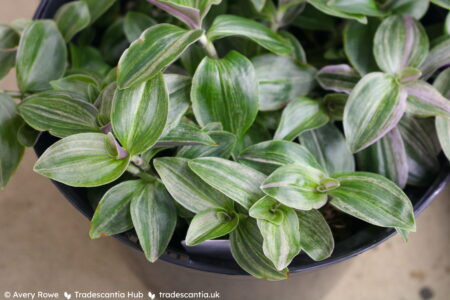Details
| Full name | Tradescantia (Continental Group) ‘Sweet Tabby’. |
| Name status | Accepted, the valid name for a unique cultivar. Established with a description by Hatch (2022). Also known as:
|
| Origins | Developed as a sport from Tradescantia ‘EC-TRADE-2011’, possibly on multiple separate occasions. Named by Avery Rowe. |
| Classification | As an asexually-produced mutation, it must belong to the same species or hybrid as Tradescantia ‘EC-TRADE-2011’. The parent cultivar is sometimes identified as Tradescantia cerinthoides, but it does not match that species at all. Both are currently treated as an unknown species or hybrid in the Continental Group. |
| Legal protection | None. |
| Availability | Available from specialists in the UK and Europe, rare elsewhere. |
Description
Preserved in a herbarium specimen (“Tradescantia (Continental Group) ‘Sweet Tabby'”, 2023).
Described with reference to the RHS Colour Chart (6th Edition: 2019 reprint).
| Cultivar group | Tradescantia Continental Group. |
| Growth habit | Very compact and heavily-branching stems which tend to crawl along the surface. Growth is fairly slow. |
| Foliage | Stems are 2-4mm wide, with internodes 1-4cm long, moderate yellow green (146B) to greyish olive green (NN137B). Leaves are rounded ovals, 3-7cm long and 2-3cm wide, smooth except for a few hairs at the top of the sheath. The base colour of the upper surface is moderate olive green (146A). The surfaces are covered with a variable pattern of random mottled stripes, light purple (75B) to very pale purple (73D). Undersides are greyish purplish red (N77B) or greyish reddish purple (N77C), with prominent moderate yellow green (N148A) veins. Sheaths are pale yellow green (192A). |
| Flowers | About 10mm across. Petals are pure white. Anthers are yellow, filaments and pistil are white. |
References
Hatch, L. (2022). Commelinaceae: A Guide to Modern and Historic Cultivars.
Tradescantia (Continental Group) ‘Sweet Tabby’. (2023). [Herbarium specimen, barcode WSY0168563]. RHS Wisley Herbarium.

